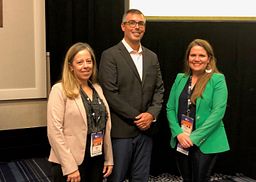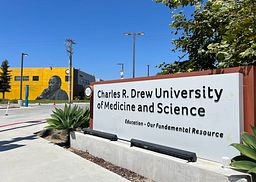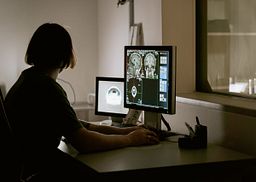Ritsema Receives 2019 Faculty-Generated Research Grant
PAEA is thrilled to announce that Tamara Ritsema, PhD, MPH, MMSc, PA-C/R, assistant professor at the George Washington University PA program, is the 2018-2019 PAEA Faculty-Generated Research Grant awardee. She will receive a $50,000 grant for the project “Measuring the Value of Physician Assistants in Emergency Medicine Practice.” The reviewers were extremely impressed by the potential impact that this study could have and look forward to the scholarly work that will result from it.
Ritsema is joined by co-investigators Jesse Pines, MD, MBA, professor of emergency medicine at Allegheny General Hospital; Arvind Venkat, MD, professor at the Allegheny Health Network; Maura Polansky, MS, MHPE, PA-C, associate professor at the George Washington University PA program; and Mark Zocchi, PhD candidate in the Heller School of Social Policy and Management at Brandeis University.
Applicants for the grant initially submitted blinded letters of intent, providing a brief overview of their proposed research projects. Following a rigorous review process, a select pool of applicants was invited to submit a blinded full proposal. Members of the PAEA Research Mission Advancement Commission and Grants & Scholarship Review Committee served as reviewers.
In a brief interview, Ritsema provided insight into her anticipated research and its critical importance to PA education and the profession.
Can you tell us about your research question and its significance to the field of PA education?
More than 75 percent of emergency departments (EDs) in the United States employ PAs, but the way PAs are deployed is highly variable. Some PAs only see low-acuity patients; other PAs see all patients, regardless of disease severity. In rural or low-volume EDs, the PA may be the only medical provider on site, whereas in higher-volume EDs, the PA may be just one member of a larger medical team. National datasets based on billing data under-capture the contribution of PAs to the care patients receive, because the care is often billed in the name of a physician — regardless of who provided the care. Therefore, the specific contribution of individual PAs, as well as PAs as a whole, cannot be assessed.
Our study will investigate (1) the impact of PAs on ED performance and productivity and (2) how PA productivity varies within and between EDs. This project is unique in that it will use data from a large emergency medicine (EM) private practice, US Acute Care Solutions (USACS), which provides medical staff to 171 EDs nationwide. This project will include more than 13 million ED visits over a four-year period. The specific contribution of PAs and MDs to the care of each patient is captured in the USACS database. The research staff from USACS (Dr. Jesse Pines, Dr. Arvind Venkat, and Mark Zocchi) have extensive experience in using these data to answer large scale EM workforce questions.
What inspired your interest in this project?
Our interest in this project comes from the lack of literature on the value that PAs bring to the health care system. The compromises made in the Medicare Act of 1986, which authorized PAs to bill for their services “incident to” physicians, has made it very difficult to answer PA and NP workforce research questions using billing data. We view this collaboration with USACS as a way to begin to assess the value that PAs bring to the U.S. health care system, even if this analysis is limited only to the practice of EM.
What kinds of new information will this research provide? In what potential ways do you see the results impacting PA education?
As mentioned above, this project represents an opportunity to capture the value PAs bring to the U.S. health care system from a reliable, national, and nationally representative dataset. The results should help PA educators better demonstrate the value of the work we do in educating PAs to policy-makers, insurers, and to our deans. It also may help us better prepare students who are considering careers in EM for the range of EM practice out in the field. Documenting the value PAs bring to the system might also allow us to obtain greater funds at the national and state levels to support PA education.
Do you see policy or practice implications for your research?
Yes. We have always had to assert that PAs bring value to the system. Our standard response has been “if PAs didn’t bring value to the system, people would stop hiring them.” It would be fantastic to be able to show proof of PA value to policy-makers, legislators, hospital administrators, etc.
What do you think are the most pressing topics for research in the PA profession right now?
At the risk of sounding like a broken record, I think we do need to be able to demonstrate PA value to the health system. We can’t get by any more solely on the fact that people like us! We need to demonstrate what PAs bring to the system quantitatively. This research focuses on EM practice. We need to try to answer these questions for primary care and specialty practice as well.
We need more multi-site PA educational research. Many researchers look at outcomes from one program. Ideally, researchers will collaborate with each other and collect data across several PA programs to enhance the generalizability of the research that comes from our community. Strong study designs and meaningful results in our educational research can give us data to drive our decisions about curriculum and delivery.
What are your goals as a PA researcher, and how will receiving this grant help advance those goals?
My goal is to continue to improve my knowledge and skills with various research methods and data sources to allow me to participate in the development of research that can be used by policy-makers. Receiving this grant allows me to collaborate with very experienced biostatisticians to develop more skills in model development and data analysis.
You’ve assembled an interdisciplinary team of researchers for this project. What strengths and expertise will each of you bring to this study?
The team at USACS provides access to the large EM database that we will analyze. They also bring strong epidemiologic and biostatistical expertise. Drs. Pines and Venkat are both experienced health services researchers and practicing emergency physicians. The team at GW, which includes myself and Maura Polansky, provides expertise in PA workforce research and EM practice.
Do you have any advice for faculty who may be considering applying for this grant opportunity in the future?
Look around for opportunities to collaborate outside of academia and government. For many years, we have been decrying the lack of analyzable data on PA practice. Market consolidation of health care, combined with the ability to generate large datasets that didn’t exist 10 years ago, will mean that more useful large datasets are in private hands. Consider collaborating with these private entities to access high-quality data.




